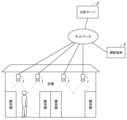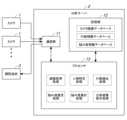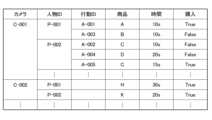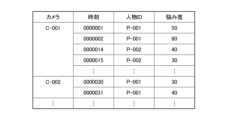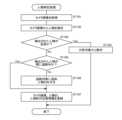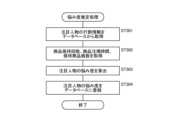JP7689318B2 - Store operation support device and store operation support method - Google Patents
Store operation support device and store operation support methodDownload PDFInfo
- Publication number
- JP7689318B2 JP7689318B2JP2021097760AJP2021097760AJP7689318B2JP 7689318 B2JP7689318 B2JP 7689318B2JP 2021097760 AJP2021097760 AJP 2021097760AJP 2021097760 AJP2021097760 AJP 2021097760AJP 7689318 B2JP7689318 B2JP 7689318B2
- Authority
- JP
- Japan
- Prior art keywords
- person
- product
- behavior
- store
- information
- Prior art date
- Legal status (The legal status is an assumption and is not a legal conclusion. Google has not performed a legal analysis and makes no representation as to the accuracy of the status listed.)
- Active
Links
Images
Classifications
- G—PHYSICS
- G06—COMPUTING OR CALCULATING; COUNTING
- G06Q—INFORMATION AND COMMUNICATION TECHNOLOGY [ICT] SPECIALLY ADAPTED FOR ADMINISTRATIVE, COMMERCIAL, FINANCIAL, MANAGERIAL OR SUPERVISORY PURPOSES; SYSTEMS OR METHODS SPECIALLY ADAPTED FOR ADMINISTRATIVE, COMMERCIAL, FINANCIAL, MANAGERIAL OR SUPERVISORY PURPOSES, NOT OTHERWISE PROVIDED FOR
- G06Q30/00—Commerce
- G06Q30/02—Marketing; Price estimation or determination; Fundraising
- G—PHYSICS
- G06—COMPUTING OR CALCULATING; COUNTING
- G06Q—INFORMATION AND COMMUNICATION TECHNOLOGY [ICT] SPECIALLY ADAPTED FOR ADMINISTRATIVE, COMMERCIAL, FINANCIAL, MANAGERIAL OR SUPERVISORY PURPOSES; SYSTEMS OR METHODS SPECIALLY ADAPTED FOR ADMINISTRATIVE, COMMERCIAL, FINANCIAL, MANAGERIAL OR SUPERVISORY PURPOSES, NOT OTHERWISE PROVIDED FOR
- G06Q30/00—Commerce
- G06Q30/02—Marketing; Price estimation or determination; Fundraising
- G06Q30/0201—Market modelling; Market analysis; Collecting market data
- G—PHYSICS
- G06—COMPUTING OR CALCULATING; COUNTING
- G06Q—INFORMATION AND COMMUNICATION TECHNOLOGY [ICT] SPECIALLY ADAPTED FOR ADMINISTRATIVE, COMMERCIAL, FINANCIAL, MANAGERIAL OR SUPERVISORY PURPOSES; SYSTEMS OR METHODS SPECIALLY ADAPTED FOR ADMINISTRATIVE, COMMERCIAL, FINANCIAL, MANAGERIAL OR SUPERVISORY PURPOSES, NOT OTHERWISE PROVIDED FOR
- G06Q30/00—Commerce
- G06Q30/06—Buying, selling or leasing transactions
- G—PHYSICS
- G06—COMPUTING OR CALCULATING; COUNTING
- G06V—IMAGE OR VIDEO RECOGNITION OR UNDERSTANDING
- G06V20/00—Scenes; Scene-specific elements
- G06V20/50—Context or environment of the image
- G06V20/52—Surveillance or monitoring of activities, e.g. for recognising suspicious objects
- G—PHYSICS
- G06—COMPUTING OR CALCULATING; COUNTING
- G06V—IMAGE OR VIDEO RECOGNITION OR UNDERSTANDING
- G06V40/00—Recognition of biometric, human-related or animal-related patterns in image or video data
- G06V40/10—Human or animal bodies, e.g. vehicle occupants or pedestrians; Body parts, e.g. hands
- G06V40/103—Static body considered as a whole, e.g. static pedestrian or occupant recognition
- G—PHYSICS
- G06—COMPUTING OR CALCULATING; COUNTING
- G06V—IMAGE OR VIDEO RECOGNITION OR UNDERSTANDING
- G06V40/00—Recognition of biometric, human-related or animal-related patterns in image or video data
- G06V40/20—Movements or behaviour, e.g. gesture recognition
Landscapes
- Engineering & Computer Science (AREA)
- Business, Economics & Management (AREA)
- Finance (AREA)
- Accounting & Taxation (AREA)
- Theoretical Computer Science (AREA)
- General Physics & Mathematics (AREA)
- Development Economics (AREA)
- Physics & Mathematics (AREA)
- Strategic Management (AREA)
- Multimedia (AREA)
- Entrepreneurship & Innovation (AREA)
- Human Computer Interaction (AREA)
- Economics (AREA)
- Marketing (AREA)
- General Business, Economics & Management (AREA)
- Game Theory and Decision Science (AREA)
- Data Mining & Analysis (AREA)
- Health & Medical Sciences (AREA)
- Computer Vision & Pattern Recognition (AREA)
- General Health & Medical Sciences (AREA)
- Psychiatry (AREA)
- Social Psychology (AREA)
- Management, Administration, Business Operations System, And Electronic Commerce (AREA)
Description
Translated fromJapanese本発明は、店舗において陳列エリアの前に滞在する人物を撮影したカメラ画像に基づいて、人物の品定め状況に関する分析を行い、その分析結果をユーザに提示することでユーザの店舗運営業務を支援する店舗運営支援装置および店舗運営支援方法に関するものである。The present invention relates to a store operation support device and a store operation support method that analyzes the shopping behavior of people based on camera images of people standing in front of a display area in a store and supports the store operation of a user by presenting the analysis results to the user.
店舗では、顧客が、商品を購入する際に、陳列棚の前で商品の品定めを行う。このような顧客の品定め状況に関する分析を行うと、在庫管理や店内レイアウトなどに関する改善策を検討する上で有益な情報を、ユーザ(店舗の管理者など)に提示して、ユーザの業務を支援することができる。When a customer purchases an item in a store, he or she examines the item in front of the display shelves. By analyzing such customer evaluation behavior, useful information can be presented to the user (such as a store manager) for considering improvement measures for inventory management and in-store layout, thereby supporting the user's work.
このような店舗における顧客の品定め状況に関する分析に関連する技術として、従来、陳列棚を撮影したカメラ画像に基づいて、「商品棚に商品が配置されたことによる変化」、または、「商品棚に配置された商品の位置をずらしたことによる変化」を検出して、顧客が興味を持ったが購入されなかった商品を特定し、顧客が商品に興味を持ったが購入しなかった頻度を取得する技術が知られている(特許文献1参照)。A known technology related to the analysis of customer shopping behavior in such stores is to detect "changes due to the placement of products on the shelves" or "changes due to the positioning of products on the shelves being shifted" based on camera images of display shelves, identify products that customers were interested in but did not purchase, and obtain the frequency with which customers were interested in products but did not purchase them (see Patent Document 1).
しかしながら、従来の技術は、顧客が商品に興味を持ったが購入しなかった頻度にしか注目していない。このため、ユーザが、顧客の品定め状況、具体的には、顧客が品定めにどの程度悩んでいたかを十分に把握できない。これにより、ユーザが、提示された情報に基づいて、直ちに店舗の運営改善に向けた有効な施策等を講ずることができないという問題があった。However, conventional technology only focuses on the frequency with which customers were interested in products but did not purchase them. This means that users cannot fully grasp the customer's product selection situation, specifically, the extent to which the customer struggled to select a product. This creates a problem in that users are unable to immediately take effective measures to improve store operations based on the information presented to them.
そこで、本発明は、ユーザが、顧客の品定め状況を十分に把握することができ、直ちに店舗の運営改善に向けた有効な施策等を講ずることができる店舗運営支援装置および店舗運営支援方法を提供することを主な目的とする。The main objective of the present invention is to provide a store operation support device and a store operation support method that enable users to fully understand the product selection status of customers and immediately take effective measures to improve store operations.
本発明の店舗運営支援装置は、店舗において陳列エリアの前に滞在する人物を撮影したカメラ画像に基づき、人物の品定め状況に関する分析を行い、その分析結果をユーザに提示する処理を行うプロセッサを備えた店舗運営支援装置であって、前記プロセッサが、前記カメラ画像から商品および人物を検出して、分析対象とする商品および人物を特定し、前記カメラ画像から人物の商品保持行動と、その商品保持行動に伴う商品注視行動とを検出して、その検出結果を行動情報として取得し、前記分析対象とする人物ごとの前記行動情報を商品と対応付けて記憶部に蓄積し、前記記憶部に蓄積された前記行動情報に基づき、少なくとも前記商品注視行動の継続時間を含む品定め情報を生成して、その人物ごとの品定め情報を前記記憶部に蓄積し、前記記憶部に蓄積された前記品定め情報に基づき、各商品に対応した品定め状況を可視化した前記分析結果を取得する構成とする。 The store operations support device of the present invention is a store operations support device equipped with a processor that performs processing to analyze a person's shopping behavior based on camera images of a person staying in front of a display area in a store and present the analysis results to a user, in which the processor detectsproducts and people from the camera images and identifiesthe products and people to be analyzed, detects the person's product holding behavior and product gaze behavior accompanying the product holding behavior from the camera images and obtains the detection results as behavioral information, associates the behavioral information for each person to be analyzed with a product and stores it in a memory unit, generates shopping information including at least the duration of the product gaze behavior based on the behavioral information stored in the memory unit, stores the shopping information for each person in the memory unit, and obtains the analysis results in which the shopping behavior corresponding to each product is visualized based on the shopping information stored in the memory unit.
また、本発明の店舗運営支援方法は、店舗において陳列エリアの前に滞在する人物を撮影したカメラ画像に基づき、人物の品定め状況に関する分析を行い、その分析結果をユーザに提示する処理を情報処理装置に行わせる店舗運営支援方法であって、前記カメラ画像から商品および人物を検出して、分析対象とする商品および人物を特定し、前記カメラ画像から人物商品保持行動と、その商品保持行動に伴う商品注視行動とを検出して、その検出結果を行動情報として取得し、前記分析対象とする人物ごとの前記行動情報を商品と対応付けて記憶部に蓄積し、前記記憶部に蓄積された前記行動情報に基づき、少なくとも前記商品注視行動の継続時間を含む品定め情報を生成して、その人物ごとの品定め情報を前記記憶部に蓄積し、前記記憶部に蓄積された前記品定め情報に基づき、各商品に対応した品定め状況を可視化した前記分析結果を取得する構成とする。 In addition, the store operation support method of the present invention is a store operation support method that causes an information processing device to perform a process of analyzing a person's shopping behavior based on camera images of a person staying in front of a display area in a store and presenting the analysis results to a user, and is configured to detectproducts andpeople from the camera images, identify the products and people to be analyzed, detect the person's product holding behavior and product gaze behavior associated with the product holding behavior from the camera images, obtain the detection results as behavioral information, associate the behavioral information for each person to be analyzed with a product and store it in a memory unit, generate shopping information including at least the duration of the product gaze behavior based on the behavioral information stored in the memory unit, store the shopping information for each person in the memory unit, and obtain the analysis result that visualizes the shopping behavior corresponding to each product based on the shopping information stored in the memory unit.
本発明によれば、商品の品定めに要した時間を含む品定め情報に基づき、各商品に対応した品定め状況を可視化した分析結果を取得して、その分析結果をユーザに提示する。これにより、ユーザが、顧客の品定め状況を十分に把握することができ、直ちに店舗の運営改善に向けた有効な施策等を講ずることができる。According to the present invention, analysis results are obtained that visualize the shopping situation for each product based on shopping information including the time required to evaluate the product, and the analysis results are presented to the user. This allows the user to fully understand the shopping situation of customers and immediately take effective measures to improve the operation of the store.
前記課題を解決するためになされた第1の発明は、店舗において陳列エリアの前に滞在する人物を撮影したカメラ画像に基づき、人物の品定め状況に関する分析を行い、その分析結果をユーザに提示する処理を行うプロセッサを備えた店舗運営支援装置であって、前記プロセッサが、前記カメラ画像から商品および人物を検出して、分析対象とする商品および人物を特定し、前記カメラ画像から人物の商品保持行動と、その商品保持行動に伴う商品注視行動とを検出して、その検出結果を行動情報として取得し、前記分析対象とする人物ごとの前記行動情報を商品と対応付けて記憶部に蓄積し、前記記憶部に蓄積された前記行動情報に基づき、少なくとも前記商品注視行動の継続時間を含む品定め情報を生成して、その人物ごとの品定め情報を前記記憶部に蓄積し、前記記憶部に蓄積された前記品定め情報に基づき、各商品に対応した品定め状況を可視化した前記分析結果を取得する構成とする。 The first invention made to solve the above-mentioned problems is a store operation support device equipped with a processor that performs processing to analyze a person's shopping behavior based on camera images of a person staying in front of a display area in a store and present the analysis results to a user, in which the processor detectsproducts and people from the camera images and identifiesthe products and people to be analyzed, detects the person's product holding behavior and product gaze behavior associated with the product holding behavior from the camera images, obtains the detection results as behavioral information, associates the behavioral information for each person to be analyzed with a product and stores it in a memory unit, generates shopping information including at least the duration of the product gaze behavior based on the behavioral information stored in the memory unit, stores the shopping information for each person in the memory unit, and obtains the analysis results in which the shopping behavior corresponding to each product is visualized based on the shopping information stored in the memory unit.
これによると、商品の品定めに要した時間を含む品定め情報に基づき、各商品に対応した品定め状況を可視化した分析結果を取得して、その分析結果をユーザに提示する。これにより、ユーザが、顧客の品定め状況を十分に把握することができ、直ちに店舗の運営改善に向けた有効な施策等を講ずることができる。According to this system, analysis results are obtained that visualize the shopping situation for each product based on shopping information, including the time it took to evaluate the product, and the analysis results are presented to the user. This allows the user to fully understand the shopping situation of customers, and immediately take effective measures to improve the operation of the store.
また、第2の発明は、前記プロセッサが、前記カメラ画像から検出された人物の特徴情報に基づき、その人物を店員と判定すると、その人物を分析対象から除外する構成とする。In addition, the second invention is configured such that when the processor determines that a person is a store clerk based on the characteristic information of the person detected from the camera image, the processor excludes the person from the analysis target.
これによると、品出しなどの作業を行う店員が分析対象に含まれることを避けることができるため、適切な分析結果を得ることができる。This allows us to avoid including store clerks who are doing tasks such as stocking products in the analysis, thereby obtaining appropriate analysis results.
また、第3の発明は、前記プロセッサが、前記陳列エリアごとの前記品定め情報を可視化した画像が、店舗内のレイアウトを表す画像上に描画されたマップ画像を含む前記分析結果を出力する構成とする。 In addition,a third invention is configured such that the processor outputs the analysis results, which include a map image in which an image visualizing the product evaluation information for each display area is drawn on an image representing the layout of the store.
これによると、ユーザが、陳列エリアごとの顧客の品定め状況を即座に把握することができる。この場合、各時刻のマップ画像が動画で再生されるものとしてもよい。This allows the user to instantly understand how customers are selecting items in each display area. In this case, the map image for each time may be played as a video.
また、第4の発明は、前記プロセッサが、前記マップ画像を表示した画面において前記陳列エリアを選択するユーザの操作に応じて、選択された前記陳列エリアに対応する前記カメラ画像を含む前記分析結果を出力する構成とする。 In addition,a fourth invention is configured such that the processor outputs the analysis result including the camera image corresponding to the selected display area in response to a user's operation of selecting the display area on a screen displaying the map image.
これによると、ユーザが、マップ画像を閲覧することで注目した陳列エリアに関して、カメラ画像を閲覧することで、顧客の品定め状況を具体的に把握することができる。この場合、各時刻のカメラ画像が動画で再生されるものとしてもよい。This allows users to specifically grasp the status of customers' product selection by viewing camera images for a display area that has caught their attention while viewing the map image. In this case, the camera images for each time may be played back as a video.
また、第5の発明は、前記プロセッサが、前記行動情報に基づき、前記品定め情報として、商品保持回数、商品注視時間、および保持商品数を取得し、この商品保持回数、商品注視時間、および保持商品数に基づき、人物が品定めに悩んだ度合を数値化した品定め度数を取得する構成とする。 In addition,the fifth invention is configured so that the processor acquires the number of times an item was held, the time spent looking at items, and the number of items held as the evaluation information based on the behavioral information, and acquires an evaluation level that quantifies the degree to which the person had difficulty evaluating items based on the number of times an item was held, the time spent looking at items, and the number of items held.
これによると、品定め度数(悩み度)により、顧客の品定め状況をヒートマップやグラフを用いて可視化することができる。これにより、ユーザが、顧客の品定め状況を容易に把握することができる。This allows the customer's shopping situation to be visualized using heat maps and graphs based on the shopping level (degree of concern). This allows users to easily understand the customer's shopping situation.
また、第6の発明は、店舗において陳列エリアの前に滞在する人物を撮影したカメラ画像に基づき、人物の品定め状況に関する分析を行い、その分析結果をユーザに提示する処理を情報処理装置に行わせる店舗運営支援方法であって、前記カメラ画像から商品および人物を検出して、分析対象とする商品および人物を特定し、前記カメラ画像から人物商品保持行動と、その商品保持行動に伴う商品注視行動とを検出して、その検出結果を行動情報として取得し、前記分析対象とする人物ごとの前記行動情報を商品と対応付けて記憶部に蓄積し、前記記憶部に蓄積された前記行動情報に基づき、少なくとも前記商品注視行動の継続時間を含む品定め情報を生成して、その人物ごとの品定め情報を前記記憶部に蓄積し、前記記憶部に蓄積された前記品定め情報に基づき、各商品に対応した品定め状況を可視化した前記分析結果を取得する構成とする。 In addition, a sixth invention is a store operation support method that causes an information processing device to perform a process of analyzing a person's shopping behavior based on camera images of a person staying in front of a display area in a store and presenting the analysis results to a user, the method being configured to detectproducts and people from the camera images, identifythe products and people to be analyzed, detect the person's product holding behavior and product gaze behavior associated with the product holding behavior from the camera images, obtain the detection results as behavioral information, associate the behavioral information for each person to be analyzed with a product and store it in a memory unit, generate shopping information including at least the duration of the product gaze behavior based on the behavioral information stored in the memory unit, store the shopping information for each person in the memory unit, and obtain the analysis results that visualize the shopping behavior corresponding to each product based on the shopping information stored in the memory unit.
これによると、第1の発明と同様に、ユーザが、顧客の品定め状況を十分に把握することができ、直ちに店舗の運営改善に向けた有効な施策等を講ずることができる。As with the first invention, this allows the user to fully understand the customer's product selection situation and immediately take effective measures to improve the store's operations.
以下、本発明の実施の形態を、図面を参照しながら説明する。The following describes an embodiment of the present invention with reference to the drawings.
図1は、本実施形態に係る店舗運営支援システムの全体構成図である。Figure 1 is a diagram showing the overall configuration of the store operation support system according to this embodiment.
この店舗運営支援システムは、店舗において陳列棚の前で品定めを行う顧客の状況に関する分析を行い、その分析結果をユーザ(店舗の管理者)に提示して、ユーザの業務を支援するものである。店舗運営支援システムは、カメラ1と、分析サーバ2(店舗運営支援装置、情報処理装置)と、閲覧端末3とを備えている。カメラ1、分析サーバ2、および閲覧端末3は、ネットワークを介して接続されている。This store operations support system analyzes the behavior of customers browsing products in front of display shelves in a store and presents the analysis results to a user (store manager) to support the user's work. The store operations support system comprises a
カメラ1は、店舗内の適所に設置される。カメラ1は、店舗内の陳列棚(陳列エリア)と、その手前側で顧客が品定めのために滞在する通路(滞在エリア)とを撮影する。Camera 1 is installed in an appropriate location within the store.
分析サーバ2は、店舗における顧客の品定めの状況に関する分析を行う。分析サーバ2は、PCなどで構成される。なお、分析サーバ2は、店舗内に設置される他に、クラウドコンピュータであってもよい。The
閲覧端末3は、ユーザ(店舗の管理者など)が分析サーバ2の分析結果を閲覧するものである。閲覧端末3は、PCやタブレット端末などで構成される。The
ここで、本実施形態では、顧客の品定め状況に関する分析が、商品区分(麺類、おにぎりなど)に対応する陳列エリア(陳列棚)ごとに行われる。一方、カメラ1は、対象とする商品区分の陳列エリアを撮影する。これにより、分析サーバ2は、カメラ画像に基づいて、顧客の品定め状況に関する分析を陳列エリア(商品区分)ごとに行うことができる。なお、1台のカメラ1で複数の陳列エリアを撮影して、そのカメラ1によるカメラ画像から、各陳列エリアの撮影画像を抽出するものとしてもよい。In this embodiment, an analysis of the customer's selection status is performed for each display area (display shelf) corresponding to a product category (noodles, rice balls, etc.). Meanwhile,
次に、店舗内の陳列棚の前における顧客の行動について説明する。図2は、顧客が品定めを行う際のカメラ画像の遷移状況を示す説明図である。Next, we will explain the behavior of customers in front of display shelves in a store. Figure 2 is an explanatory diagram showing the transition of camera images when a customer is browsing products.
カメラ1は、陳列棚(陳列エリア)と、その手前側で顧客が品定めのために滞在する通路(滞在エリア)とを、上方から撮影する。カメラ画像には、陳列棚の商品や、陳列棚の前で品定めを行う人物(顧客)が写る。なお、カメラ1が陳列棚および人物を側方から撮影するものとしてもよい。また、カメラ1では、所定のフレームレートで撮影された各時刻のカメラ画像(フレーム)が定期的に分析サーバ2に送信される。
ここで、人物が商品を購入しなかった場合について説明する。この場合、まず、図2(A),(B)に示すように、陳列棚の前に人物が現れる。次に、図2(C)に示すように、人物が、商品棚に手を伸ばして商品棚の商品を手に取る。次に、図2(D)に示すように、人物が、手に取った商品を注視する。次に、図2(E)に示すように、人物が、手に取った商品を商品棚に戻す。次に、図2(F),(G)に示すように、人物が、陳列棚の前からいなくなる。Now, we will explain what happens when the person does not purchase an item. In this case, first, as shown in Figures 2(A) and (B), the person appears in front of the display shelf. Next, as shown in Figure 2(C), the person reaches out to the shelf and picks up an item from the shelf. Next, as shown in Figure 2(D), the person stares at the item they have picked up. Next, as shown in Figure 2(E), the person returns the item they have picked up to the shelf. Next, as shown in Figures 2(F) and (G), the person disappears from in front of the display shelf.
一方、人物が商品を購入した場合には、図2(D)に示すように、人物が、手に取った商品を注視した後、手に取った商品を商品棚に戻さないまま、図2(G)に示すように、陳列棚の前からいなくなる。このため、人物が、手に取った商品を商品棚に戻す動作を検知できない場合には、その人物が商品を購入したものと判定することができる。On the other hand, if a person purchases an item, as shown in FIG. 2(D), the person stares at the item they picked up, then, without returning it to the shelf, they leave the display shelf as shown in FIG. 2(G). Therefore, if the system is unable to detect the person returning the item they picked up to the shelf, it can be determined that the person has purchased an item.
また、本実施形態では、顧客の品定めに関係する行動として、商品保持行動と商品注視行動とが検出される。商品保持行動は、図2(C),(D),(E)に示すように、人物が商品を手に保持する行動である。この商品保持行動の検出状況に基づいて、人物が、商品棚の商品を手に取ったり、手に取った商品を商品棚に戻したりしたことを検知することができる。また、商品注視行動は、図2(D)に示すように、人物が商品を注視する行動である。この商品注視行動の継続時間(商品注視時間)は、商品の品定めに要した時間であり、顧客が品定めに悩んでいる度合を表し、注視時間が長い程、顧客が品定めに悩んでいるものと推定される。In addition, in this embodiment, product holding behavior and product gazing behavior are detected as behaviors related to customer selection. Product holding behavior is a behavior in which a person holds a product in their hand, as shown in Figures 2 (C), (D), and (E). Based on the detection status of this product holding behavior, it is possible to detect whether a person has picked up a product from a product shelf or returned the product they picked up to the product shelf. Product gazing behavior is a behavior in which a person gazes at a product, as shown in Figure 2 (D). The duration of this product gazing behavior (product gazing time) is the time it takes to select the product, and indicates the degree to which the customer is struggling to select the product; it is estimated that the longer the gazing time, the more struggling the customer is to select the product.
なお、本実施形態では、商品が陳列棚に陳列された例について説明するが、商品が陳列される店舗什器は陳列棚に限定されない。例えば、陳列棚の他に陳列台(ワゴン)などに商品が陳列される場合もある。In this embodiment, an example in which products are displayed on display shelves is described, but the store fixtures on which the products are displayed are not limited to display shelves. For example, products may be displayed on display stands (wagons) other than display shelves.
次に、分析サーバ2の概略構成について説明する。図3は、分析サーバ2の概略構成を示すブロック図である。Next, we will explain the general configuration of the
分析サーバ2は、通信部11と、記憶部12と、プロセッサ13と、を備えている。The
通信部11は、カメラ1および閲覧端末3との間で通信を行う。The
記憶部12は、プロセッサ13で実行されるプログラムなどを記憶する。また、記憶部12は、カメラ画像データベース(図4参照)の登録情報、行動情報データベース(図5参照)の登録情報、および悩み度情報データベース(図6参照)の登録情報を記憶する。The
プロセッサ13は、記憶部12に記憶されたプログラムを実行することで各種の処理を行う。本実施形態では、プロセッサ13が、画像取得処理、人物特定処理、行動検出処理、悩み度推定処理、悩み度集計処理、および分析結果提示処理などを行う。The
画像取得処理では、プロセッサ13が、通信部11によりカメラ1から受信したカメラ画像を取得する。このカメラ画像は、カメラ1のIDおよび撮影時刻と対応付けてカメラ画像データベース(図4参照)に登録される。In the image acquisition process, the
人物特定処理では、プロセッサ13が、カメラ画像に基づいて、分析対象とする人物を特定する。このとき、まず、カメラ画像から人物を検出し(人物検出処理)、その人物の特徴情報に基づいて、店員でないと判定された人物、すなわち、顧客に対して、分析対象としての人物IDを付与する。一方、検出された人物が店員である場合には、その人物を分析対象(検出結果)から除外する(店員除外処理)。また、プロセッサ13が、カメラ画像から抽出された人物の特徴情報に基づいて、以前に検出された人物と同一人物である場合には、その人物を対応付ける処理(人物追跡処理)を行う。In the person identification process, the
行動検出処理では、プロセッサ13が、人物特定処理で分析対象とした人物に関して、各時刻のカメラ画像(フレーム)から人物の行動を検出する。行動検出処理の結果として、各カメラにおける人物ごとの行動情報が、行動情報データベース(図5参照)に登録される。In the behavior detection process, the
ここで、本実施形態では、プロセッサ13が、顧客の品定めに関係する行動として、人物が商品を手に保持する行動(商品保持行動)と、人物が商品を注視する行動(商品注視行動)とを検出する。Here, in this embodiment, the
また、ここでは、プロセッサ13が、各時刻のカメラ画像(フレーム)から検出された行動を、同一人物による一連の行動として対応付ける(行動追跡処理)。具体的には、カメラ画像から人物の行動が新規に検出されると、その行動に新たな行動IDが付与され、以降のカメラ画像から検出される同一人物による一連の行動には同一の行動IDが付与される。Here, the
また、ここでは、プロセッサ13が、カメラ画像から人物が手に取った商品を検出して、その商品の名称を画像認識により特定する(商品検出処理)。Here, the
また、ここでは、プロセッサ13が、人物の商品注視行動の継続時間を測定することで、人物が商品を注視した時間(商品注視時間)を取得する(注視時間測定処理)。具体的には、商品注視行動が検出されたカメラ画像(フレーム)の枚数と、カメラ画像の間隔(フレーム間隔)に対応する1サイクル分の時間とに基づいて、商品注視時間が測定される。Here, the
また、ここでは、プロセッサ13が、人物の追跡期間(人物がカメラ1の撮影エリアに進入してから退出するまでの期間)が終了したところで、購入の有無を判定する(購入判定処理)。このとき、人物の商品保持行動を追跡することで、人物が手に取った商品を商品棚に戻したか否かが検知され、その結果に応じて購入の有無を判定する。なお、人物が手に取った商品を陳列棚に戻さないまま陳列棚の前からいなくなることで、購入と判定すればよいが、人物が手に取った商品をカゴに入れる動作を検知するものとしてもよい。Here, the
悩み度推定処理では、プロセッサ13が、行動情報データベース(図5参照)に登録された行動検出処理の検出結果である行動情報に基づいて、各陳列エリアの各時刻における人物ごとの悩み度を推定する。悩み度推定処理の結果として、各陳列エリアに対応する各カメラ1の各時刻における人物ごとの悩み度が悩み度情報データベース(図6参照)に登録される。In the distress level estimation process, the
悩み度(品定め度数)は、人物が商品を購入する際に品定めに悩んだ度合を数値化したものである。本実施形態では、人物ごとに商品保持回数、商品注視時間、および保持商品数を取得し、この商品保持回数、商品注視時間、および保持商品数に基づいて、人物ごとの悩み度を次式に基づいて算出する。
悩み度=λ1×商品注視時間(秒)+λ2×商品保持回数(回)+λ3×保持商品数(個)
例えば、各係数に対して、λ1=1,λ2=5,λ3=10が設定され、2種類の商品をそれぞれ1回ずつ手に取り、合計で30秒注視した場合の悩み度は、1×30+5×2+10×2=60となる。 The degree of worry (degree of shopping) is a numerical representation of the degree to which a person had trouble shopping for a product. In this embodiment, the number of times a product was held, the product gaze time, and the number of held products are obtained for each person, and the degree of worry for each person is calculated based on the number of times a product was held, the product gaze time, and the number of held products in accordance with the following formula:
Anxiety level = λ1 × Product gaze time (seconds) + λ2 × Number of products held (times) + λ3 × Number of products held (pieces)
For example, if λ1 =1, λ2 =5, and λ3 =10 are set for each coefficient, and a user picks up two types of products once each and stares at them for a total of 30 seconds, the distress level is 1×30+5×2+10×2=60.
ここで、商品保持回数は、人物が商品を手に取る商品保持行動の実施回数である。商品注視時間は、人物が商品を注視する商品注視行動の継続時間である。保持商品数は、人物が商品を手に取る商品保持行動の対象となる商品の数である。なお、同一の商品を繰り返し手に取った場合の重複分はカウントされない。Here, the number of times a product is held is the number of times a person holds a product in their hand. The product gaze time is the duration of the product gaze action in which a person gazes at a product. The number of held products is the number of products that are the subject of the product holding action in which a person holds a product in their hand. Note that duplicates in which the same product is picked up are not counted.
悩み度集計処理では、プロセッサ13が、悩み度推定処理で取得した各カメラの各時刻における人物ごとの悩み度を集計して、各カメラに対応する陳列エリアごとの各時刻の悩み度を算出する。In the worry level aggregation process, the
分析結果提示処理では、プロセッサ13が、店舗内での顧客の品定め状況に関する分析結果をユーザに提示する。具体的には、閲覧端末3からの要求に応じて、悩み度集計処理で取得した陳列エリアごとの各時刻の悩み度を可視化した悩み度ヒートマップを含む店内マップ画面21(図10参照)を閲覧端末3に表示する。また、陳列エリアごとのカメラ画像と、陳列エリアごとの各時刻の悩み度を可視化した悩み度グラフとを含むカメラ画像画面51(図11参照)を閲覧端末3に表示する。In the analysis result presentation process, the
次に、分析サーバ2で管理されるカメラ画像データベースについて説明する。図4は、カメラ画像データベースの登録内容を示す説明図である。Next, we will explain the camera image database managed by the
分析サーバ2は、カメラ1から受信した各時刻のカメラ画像(フレーム)を、カメラ画像データベースに登録して管理する。カメラ画像データベースでは、カメラ画像が、カメラ1の名称(カメラID)および撮影時刻と対応付けて登録される。The
次に、分析サーバ2で管理される行動情報データベースについて説明する。図5は、行動情報データベースの登録内容を示す説明図である。Next, we will explain the behavioral information database managed by the
分析サーバ2では、各時刻のカメラ画像(フレーム)から人物の行動を検出する処理(行動検出処理)が行われ、この行動検出処理の結果、すなわち、各カメラにおける人物ごとの行動情報が、行動情報データベースに登録される。The
行動情報データベースには、人物ごとの行動情報として、陳列エリアに対応するカメラ1の名称(カメラID)、人物ID、行動ID、商品の名称(商品ID)、商品注視時間、および購入状況情報(購入の有無に関する情報)として購入(True)および非購入(False)が登録される。In the behavioral information database, the name of the
ここで、行動検出処理では、人物が商品を手に取って戻す、または商品を手に取って戻さないまま陳列棚の前から去る一連の行動に対して行動IDが付与される。したがって、ある人物が1つの陳列エリアにおいて、商品を手に取って戻す行動を複数回行った場合、人物が手に取った商品が異なる場合でも、また、商品が同じ場合でも、別の行動として検出されて、別の行動IDが付与される。Here, in the behavior detection process, a behavior ID is assigned to a series of actions in which a person picks up an item and puts it back, or picks up an item and leaves the display shelf without putting it back. Therefore, if a person picks up an item and puts it back multiple times in one display area, this will be detected as a separate behavior and assigned a separate behavior ID, even if the item picked up by the person is different, or even if the item is the same.
次に、分析サーバ2で管理される悩み度情報データベースについて説明する。図6は、悩み度情報データベースの登録内容を示す説明図である。Next, we will explain the distress level information database managed by the
分析サーバ2では、人物ごとの悩み度を推定する処理(悩み度推定処理)が行われ、この悩み度推定処理の結果、すなわち、各陳列エリアに対応する各カメラ1の各時刻における人物ごとの悩み度が、悩み度情報データベースに登録される。The
悩み度情報データベースには、人物ごとの悩み度情報として、カメラ1の名称(カメラID)、推定時刻、人物ID、および悩み度が登録される。The name of camera 1 (camera ID), estimated time, person ID, and distress level are registered in the distress level information database as distress level information for each person.
ここで、悩み度推定処理では、人物ごとの悩み度を推定する処理が定期的に行われる。したがって、品定めのために人物が商品を注視する時間(商品注視行動の継続時間)が長くなると、その人物に関する各時刻の悩み度の値は次第に大きくなる。The distress level estimation process periodically estimates the distress level for each person. Therefore, as the time that a person spends gazing at a product while selecting the product (duration of product gaze behavior) increases, the distress level value for that person at each time point gradually increases.
次に、分析サーバ2で行われる人物特定処理について説明する。図7は、分析サーバ2で行われる人物特定処理の手順を示すフロー図である。Next, we will explain the person identification process performed by the
分析サーバ2では、カメラ画像に基づいて、分析対象とする人物を特定する処理(人物特定処理)が行われる。この人物特定処理では、図7に示すフローが、カメラ1から定期的に送信される各時刻のカメラ画像(フレーム)を受信する度に実行される。The
まず、プロセッサ13が、通信部11によりカメラ1から受信したカメラ画像を取得する(画像取得処理)(ST101)。First, the
次に、プロセッサ13が、カメラ画像から人物を検出する(人物検出処理)(ST102)。このとき、カメラ画像に対して、人物を取り囲む矩形の人物枠(人物領域)を設定して、カメラ画像上での人物枠の位置情報を取得する。Next, the
次に、プロセッサ13が、カメラ画像から検出された人物が店員か否かを判定する(ST103)。このとき、服装の特徴に基づいて人物が店員か否かを判定することができる。具体的には、人物が店舗の制服を着用しているか否かに応じて、その人物が店員か否かを判定することができる。なお、店員は、陳列棚の前で品出しなどの作業を行うため、陳列棚の前で品定めをする顧客と混同される。Next, the
ここで、カメラ画像から検出された人物が店員である場合には(ST103でYes)、その人物を分析対象(検出結果)から除外する(店員除外処理)(ST104)。そして、今回のカメラ画像(フレーム)に対する処理は終了される。If the person detected from the camera image is a store clerk (Yes in ST103), that person is excluded from the analysis target (detection result) (store clerk exclusion process) (ST104). Then, processing for this camera image (frame) is terminated.
一方、カメラ画像から検出された人物が店員でない場合、すなわち顧客である場合には(ST103でNo)、次に、プロセッサ13が、カメラ画像から検出された人物が既に追跡中であるか否かを判定する(ST105)。なお、カメラ画像内に複数の人物が存在する場合、店員でない人物(すなわち、顧客)が検出された場合には、その人物ごとにST105の処理が行われる。On the other hand, if the person detected from the camera image is not a store clerk, i.e., is a customer (No in ST103), the
ここで、カメラ画像から検出された人物が既に追跡中でない、すなわち、今回のカメラ画像で初めて検出された人物である場合には(ST105でNo)、その人物を追跡対象に追加すると共に、その人物に人物IDを付与する(ST106)。Here, if the person detected from the camera image is not already being tracked, i.e., if the person is detected for the first time in the current camera image (No in ST105), the person is added to the tracking targets and a person ID is assigned to the person (ST106).
次に、プロセッサ13が、今回のカメラ画像を、カメラIDおよび撮影時刻と対応付けてカメラ画像データベース(図4参照)に登録する。また、プロセッサ13が、今回のカメラ画像に関する検出結果、すなわち、カメラ画像上での人物枠の位置情報を、人物IDと対応付けて人物追跡情報に追加する(ST107)。Next, the
一方、カメラ画像から検出された人物が既に追跡中である場合には(ST105でYes)、ST106の処理は省略される。On the other hand, if the person detected from the camera image is already being tracked (Yes in ST105), the processing in ST106 is omitted.
次に、分析サーバ2で行われる行動検出処理について説明する。図8は、分析サーバ2で行われる行動検出処理の手順を示すフロー図である。Next, we will explain the behavior detection process performed by the
分析サーバ2では、カメラ1から受信したカメラ画像に基づいて、陳列棚の前で品定めを行う顧客の行動を検出する処理(行動検出処理)が行われる。この行動検出処理では、図8に示すフローが、カメラ1から定期的に送信される各時刻のカメラ画像(フレーム)を受信する度に実行される。The
まず、プロセッサ13が、今回のカメラ画像から検出された人物を注目人物として、その注目人物が写る今回のカメラ画像(フレーム)と、人物IDおよび今回のカメラ画像上での人物枠の位置情報とを取得する(ST201)。First, the
次に、プロセッサ13が、注目人物が含まれる画像全体に対して、所定の行動認識処理を実行し、商品保持行動、商品注視行動等の注目人物の行動を検出する(ST202)。Next, the
次に、プロセッサ13が、注目人物に関して以前に検出されて追跡対象に設定された行動に関する行動情報を行動情報データベースから抽出する(ST203)。Next, the
次に、プロセッサ13が、注目人物に関して今回検出された行動と、以前に検出された行動とを比較して、注目人物に関して以前に検出された行動が今回検出されなかったか否かを判定する(ST204)。Next, the
ここで、注目人物に関して以前に検出された行動が今回も検出された場合には(ST101でNo)、次に、プロセッサ13が、注目人物に関して今回検出された行動が、既に追跡対象に設定されているか否かを判定する(ST205)。Here, if the previously detected behavior of the person of interest is detected again this time (No in ST101), the
ここで、注目人物に関して今回検出された行動が、既に追跡対象に設定されていない場合には(ST205でNo)、注目人物に関して今回検出された行動を追跡対象に追加設定すると共に、今回検出された行動に行動IDを付与する(ST206)。Here, if the behavior currently detected for the person of interest has not already been set as a tracking target (No in ST205), the behavior currently detected for the person of interest is additionally set as a tracking target, and an behavior ID is assigned to the currently detected behavior (ST206).
次に、プロセッサ13が、注目人物に関して今回検出された行動が商品注視行動であるか否かを判定する(ST207)。Next, the
ここで、注目人物に関して今回検出された行動が商品注視行動である場合には(ST207でYes)、その行動に関する注視時間の累積値に、カメラ画像の間隔(フレーム間隔)に対応する1サイクル分の時間を加算する(ST208)。ここでは、カメラ画像(フレーム)から商品注視行動が検出されるたびに、1サイクル分の時間が加算されるように注視時間の累積値が更新される。Here, if the behavior currently detected for the person of interest is a product gaze behavior (Yes in ST207), one cycle of time corresponding to the interval between camera images (frame interval) is added to the cumulative value of gaze time for that behavior (ST208). Here, each time a product gaze behavior is detected from a camera image (frame), the cumulative value of gaze time is updated so that one cycle of time is added.
次に、プロセッサ13が、行動情報データベースの登録内容を更新する(ST209)。このとき、今回検出された対象人物の行動が商品注視行動である場合には、その行動に関して今回加算された注視時間を行動情報データベース(図5参照)に登録する。Next, the
一方、注目人物に関して以前に検出された行動が今回検出されなかった場合には(ST204でYes)、次に、プロセッサ13が、注目人物の行動に関する追跡期間を確定し、その追跡期間に含まれるカメラ画像に関する検出結果、すなわち、追跡期間に含まれる注目人物の行動情報(行動IDに対応)を抽出する(ST210)。On the other hand, if a previously detected behavior of the person of interest is not detected this time (Yes in ST204), the
次に、プロセッサ13が、追跡期間に含まれる注目人物の行動情報(行動IDに対応)に基づいて、対象人物が商品を購入したか否かを判定する(購入判定処理)(ST211)。このとき、対象人物が商品を陳列棚に戻したことが検知された場合には、非購入と判定する。一方、対象人物が商品をカゴに入れたことが検知された場合や、対象人物が商品を持ったまま陳列棚から離れた場合には、購入と判定する。Next, the
次に、プロセッサ13が、注目人物に関して追跡対象に設定されていた行動を追跡対象から除外する(ST212)。Next, the
次に、プロセッサ13が、行動情報データベースの登録内容を更新する(ST209)。このとき、購入判定処理の判定結果、すなわち、購入状況(購入の有無)の情報を行動情報データベース(図5参照)に登録する。Next, the
次に、分析サーバ2で行われる悩み度推定処理について説明する。図9は、分析サーバ2で行われる悩み度推定処理の手順を示すフロー図である。Next, we will explain the distress level estimation process performed by the
分析サーバ2では、行動検出処理(図8参照)により行動情報データベース(図5参照)に登録された人物ごとの行動情報に基づいて、人物ごとの悩み度を推定する処理(悩み度推定処理)が行われる。この悩み度推定処理では、図9に示すフローが、行動検出処理で行動が検出された人物、すなわち、行動情報データベースに人物IDが登録された人物ごとに繰り返される。The
まず、プロセッサ13が、注目人物に関する行動情報を、行動情報データベース(図5参照)から取得する(ST301)。First, the
次に、プロセッサ13が、注目人物に関する行動情報に基づいて、商品保持回数、商品注視時間、および保持商品数を取得する(ST302)。Next, the
次に、プロセッサ13が、商品保持回数、商品注視時間、および保持商品数に基づいて、注目人物に関する悩み度を算出する(ST303)。Next, the
次に、プロセッサ13が、注目人物に関する悩み度を、カメラ名称、現在時刻、および人物IDと共に、悩み度情報データベース(図6参照)に登録する(ST304)。Next, the
次に、閲覧端末3に表示される店内マップ画面21について説明する。図10は、閲覧端末3に表示される店内マップ画面21を示す説明図である。Next, we will explain the in-
閲覧端末3では、陳列エリア(陳列棚)ごとの顧客の品定め状況を可視化してユーザに提示する店内マップ画面21が表示される。The
店内マップ画面21には、マップ表示部22が設けられている。マップ表示部22には、店舗内のレイアウトを表す店内マップ上に、陳列エリアごとの悩み度(品定め状況)の高さを可視化した悩み度ヒートマップ31(マップ画像)が表示される。The in-
具体的には、悩み度ヒートマップ31に、商品区分(麺類、おにぎりなど)ごとの陳列エリア(陳列棚)を表す陳列エリア画像32が描画され、この陳列エリア画像32が、悩み度の高さに応じて表示形態が変化する。図10に示す例では、陳列エリアごとの悩み度の高さが色の濃淡で表現されている。悩み度の高い陳列エリアに関する陳列エリア画像32が濃い色で強調表示される。Specifically,
このように本実施形態では、悩み度ヒートマップ31において、陳列エリアごとの悩み度(品定め状況)が可視化される。これにより、ユーザ(店舗の管理者など)が、陳列エリアごとの悩み度(品定め状況)を即座に把握することができる。図10に示す例では、ユーザが、麺類の陳列エリアで悩み度が最も高くなっていることを即座に把握することができる。In this embodiment, the concern level (item selection status) for each display area is visualized in the concern
また、店内マップ画面21には、再生操作部23が設けられている。この再生操作部23には、シークバー41上を移動可能なスライダー42が設けられている。シークバー41は、対象となる店舗における1日の営業時間(開店時刻から閉店時刻まで)に対応する。ユーザは、スライダー42を操作して再生位置(再生時刻)を指定することで、営業時間内の任意の時刻における悩み度ヒートマップ31を表示させることができる。The in-
また、悩み度ヒートマップ31は、動画で表示される。再生操作部23には、再生ボタン43が設けられている。ユーザは、再生ボタン43を操作することで、開店時刻から、あるいはスライダー42で指定した任意の時刻から、悩み度ヒートマップ31を動画で再生させることができる。これにより、ユーザが、陳列エリアごとに顧客の悩み度の変化状況を即座に把握することができる。The concern
ここで、分析サーバ2では、人物ごとの悩み度を陳列エリア(カメラ1)ごとに集計することで、陳列エリアごとの悩み度が算出される。このとき、表示時刻を基準にした所定長さ(例えば1分間)の集計期間が設定される。例えば、表示時刻の直前に所定長さの集計期間が設定される。そして、その集計期間に含まれる人物ごとの悩み度を集計して、表示時刻における陳列エリアごとの悩み度が算出される。これにより、表示時刻が進むのに応じて集計期間がずれるため、時間の経過に伴って陳列エリアごとの悩み度が変化し、その悩み度の変化に応じて、悩み度ヒートマップ31では、陳列エリア画像32の表示状態(例えば色の濃淡)が変化する。Here, the
このように本実施形態では、悩み度ヒートマップ31が動画で表示される。これにより、ユーザが、各陳列エリアにおける顧客の悩み度の推移状況を即座に把握することができる。In this manner, in this embodiment, the concern
また、再生操作部23では、ユーザが、分析対象期間をシークバー41上で指定することができる。具体的には、再生操作部23に2つの区間指定ボタン44がシークバー41に沿って移動可能に設けられている。2つの区間指定ボタン44は分析対象期間の始点および終点に対応する。ユーザは、区間指定ボタン44を操作することで、分析対象期間として任意の期間を指定することができる。このとき、シークバー41上の分析対象期間に対応する部分45が強調表示される。In addition, the
このように分析対象期間が指定されると、分析サーバ2では、指定された分析対象期間に含まれる顧客の行動情報に基づいて分析が行われ、その分析結果としての悩み度ヒートマップ31が店内マップ画面21に表示される。これにより、ユーザが、時間帯を絞り込んで顧客の悩み度を確認することができる。When the analysis period is specified in this way, the
また、店内マップ画面21には、画面を選択するためのタブ25が設けられている。ユーザは、タブ25を操作することで、店内マップ画面21(図10参照)とカメラ画像画面51(図11参照)とを切り換えることができる。The
次に、閲覧端末3に表示されるカメラ画像画面51について説明する。図11は、閲覧端末3に表示されるカメラ画像画面51を示す説明図である。Next, the
店内マップ画面21(図10参照)において、陳列エリアを選択する操作を行うと、選択された陳列エリアに関するカメラ画像画面51が表示される。また、店内マップ画面21において、カメラ画像のタブ25を操作すると、カメラ画像画面51に遷移する。When an operation to select a display area is performed on the in-store map screen 21 (see FIG. 10), a
カメラ画像画面51には、カメラ画像表示部52が設けられている。カメラ画像表示部52には、カメラ画像61が表示される。カメラ1は、陳列エリア(陳列棚)と、その手前側で顧客が品定めのために滞在するエリアとを上方から撮影する。カメラ画像61には、陳列エリアの商品や、その商品を手に取って見る顧客が写る。これにより、ユーザが、カメラ画像61を閲覧することで、顧客の実際の品定め状況を目視で具体的に確認することができる。The
また、カメラ画像表示部52では、ユーザが、カメラ画像61上において人物または商品を選択する操作を行うと、吹き出し62(情報表示部)が表示される。この吹き出し62には、人物が手に取った商品の名称、その商品を人物が手に取った回数(商品保持回数)、その商品を人物が品定めをしている時間(商品注視時間)が表示される。なお、商品を選択する操作を行うと、吹き出し62に商品の名称が表示され、人物を選択する操作を行うと、吹き出し62に人物IDが表示されるものとしてもよい。In addition, on the camera
また、カメラ画像画面51には、店内マップ画面21(図10参照)と同様に、再生操作部23が設けられている。この再生操作部23では、シークバー41に沿ってスライダー42を移動させる操作を行うことで、所要の時刻のカメラ画像を表示させることができる。また、再生ボタン43を操作することで、任意の時刻からカメラ画像を動画で再生させることができる。The
また、カメラ画像画面51には、グラフ表示部53が設けられている。グラフ表示部53には、カメラ画像に対応する陳列エリアに関する悩み度グラフ65が表示される。悩み度グラフ65では、横軸が時間を表し、縦軸が悩み度を表しており、時間の経過に応じた悩み度の推移状況が表現される。これにより、ユーザが、対象とする陳列エリアにおける悩み度の推移状況を即座に把握することができる。The
また、カメラ画像画面51には、複数のエリア選択ボタン54が陳列エリアごとに設けられている。ユーザが、エリア選択ボタン54を操作すると、そのエリア選択ボタン54に対応する陳列エリアに関するカメラ画像画面51に遷移する。これにより、ユーザが、所望の陳列エリアに関するカメラ画像画面51に容易に切り換えて、所望の陳列エリアにおける顧客の品定め状況を確認することができる。The
このように本実施形態では、悩み度の推移状況を表す悩み度グラフ65が表示されるため、ユーザが、悩み度の高い時刻を即座に把握することができる。また、ユーザが、再生操作部23を操作して、悩み度の高い時刻のカメラ画像61を表示させることで、顧客が悩んでいる最中の状況を確認することができ、また、顧客が商品を購入したか否かを把握することができる。また、ユーザが、カメラ画像61上に吹き出し62を表示させることで、顧客が手に取った商品の名称などを確認することができる。In this manner, in this embodiment, a
これにより、例えば、ユーザが、顧客がよく悩んだ末に商品を購入したか否かを認識することができる。ここで、顧客がよく悩んだ末に商品を購入した場合、顧客が他の商品と十分に比較した上で購入を決断したものと想定されることから、顧客が選んだ商品が他の商品より優れているものと考えられる。このため、当該商品を多くの顧客の目に触れやすい位置に陳列することで、売上を増やすことができる。一方、顧客がよく悩んだ末に何も購入しなかった場合には、店員が商品の案内を行うなどのサポートを実施していれば、顧客が商品を購入したことが想定される。そこで、ユーザが、顧客に対する店員のサポートのタイミングなどの販売促進のアイデアを考察することができる。This allows the user to recognize, for example, whether a customer has purchased a product after careful deliberation. Here, if a customer has purchased a product after careful deliberation, it is assumed that the customer has made a decision to purchase after thoroughly comparing it with other products, and therefore the product selected by the customer is considered to be superior to other products. For this reason, sales can be increased by displaying the product in a position where it is easily seen by many customers. On the other hand, if a customer has not purchased anything after careful deliberation, it is assumed that the customer has purchased the product if the store clerk has provided support such as introducing the product. Thus, the user can consider sales promotion ideas such as the timing of the store clerk's support for customers.
なお、店内マップ画面21およびカメラ画像画面51では、当日における顧客の行動情報に基づいて顧客の品定め状況がリアルタイムに表示されるが、過去の顧客の品定め状況が店内マップ画面21およびカメラ画像画面51に表示されるものとしてもよい。この場合、ユーザが条件(日付や曜日や期間など)を指定することで、その条件に該当するように、過去の顧客の行動情報に基づいて、店内マップ画面21およびカメラ画像画面51を生成すればよい。In addition, the in-
以上のように、本出願において開示する技術の例示として、実施形態を説明した。しかしながら、本開示における技術は、これに限定されず、変更、置き換え、付加、省略などを行った実施形態にも適用できる。また、上記の実施形態で説明した各構成要素を組み合わせて、新たな実施形態とすることも可能である。As described above, the embodiments have been described as examples of the technology disclosed in this application. However, the technology in this disclosure is not limited to this, and can also be applied to embodiments in which modifications, substitutions, additions, omissions, etc. have been made. It is also possible to combine the components described in the above embodiments to create new embodiments.
本発明に係る店舗運営支援装置および店舗運営支援方法は、ユーザが、顧客の品定め状況を十分に把握することができ、直ちに店舗の運営改善に向けた有効な施策等を講ずることができる効果を有し、店舗において陳列エリアの前に滞在する人物を撮影したカメラ画像に基づいて、人物の品定め状況に関する分析を行い、その分析結果をユーザに提示することでユーザの業務を支援する店舗運営支援装置および店舗運営支援方法などとして有用である。The store operation support device and store operation support method according to the present invention have the effect of allowing users to fully understand the shopping habits of customers and immediately take effective measures to improve store operations, and are useful as a store operation support device and store operation support method that analyzes the shopping habits of people based on camera images taken of people standing in front of a display area in a store and presents the analysis results to the user to support the user's work.
1 カメラ
2 分析サーバ(店舗運営支援装置、情報処理装置)
3 閲覧端末
12 記憶部
13 プロセッサ
21 店内マップ画面
23 再生操作部
31 悩み度ヒートマップ
32 陳列エリア画像
41 シークバー
42 スライダー
43 再生ボタン
44 区間指定ボタン
45 分析対象期間に対応する部分
51 カメラ画像画面
54 エリア選択ボタン
61 カメラ画像
62 吹き出し
65 悩み度グラフ1
3 Browsing
Claims (6)
Translated fromJapanese前記プロセッサが、
前記カメラ画像から商品および人物を検出して、分析対象とする商品および人物を特定し、
前記カメラ画像から人物の商品保持行動と、その商品保持行動に伴う商品注視行動とを検出して、その検出結果を行動情報として取得し、前記分析対象とする人物ごとの前記行動情報を商品と対応付けて記憶部に蓄積し、
前記記憶部に蓄積された前記行動情報に基づき、少なくとも前記商品注視行動の継続時間を含む品定め情報を生成して、その人物ごとの品定め情報を前記記憶部に蓄積し、
前記記憶部に蓄積された前記品定め情報に基づき、各商品に対応した品定め状況を可視化した前記分析結果を取得することを特徴とする店舗運営支援装置。 A store operation support device including a processor that performs processing to analyze a person's shopping behavior based on a camera image of a person standing in front of a display area in a store and present the analysis result to a user,
The processor,
Detectingproducts and people from the camera image and identifyingproducts and people to be analyzed;
detecting a product holding behavior of a person and a product gaze behavior associated with the product holding behavior from the camera image, acquiring the detection result as behavior information, and storing the behavior information for each person to be analyzed in a storage unit in association with a product;
generating product evaluation information including at least a duration of the product gaze behavior based on the behavior information stored in the storage unit, and storing the product evaluation information for each person in the storage unit;
A store operation support device characterized by acquiring the analysis results that visualize the shopping situation corresponding to each product based on the shopping information stored in the memory unit.
前記カメラ画像から検出された人物の特徴情報に基づき、その人物を店員と判定すると、その人物を分析対象から除外することを特徴とする請求項1に記載の店舗運営支援装置。 The processor,
2. The store operation support device according to claim 1, wherein when a person is determined to be a store clerk based on the characteristic information of the person detected from the camera image, the person is excluded from analysis targets.
前記陳列エリアごとの前記品定め情報を可視化した画像が、店舗内のレイアウトを表す画像上に描画されたマップ画像を含む前記分析結果を出力することを特徴とする請求項1に記載の店舗運営支援装置。 The processor,
The store operation support device according to claim 1, characterized in that the analysis result is outputted in such a way that an image visualizing the product evaluation information for each display area includes a map image drawn on an image representing the layout of the store.
前記マップ画像を表示した画面において前記陳列エリアを選択するユーザの操作に応じて、選択された前記陳列エリアに対応する前記カメラ画像を含む前記分析結果を出力することを特徴とする請求項3に記載の店舗運営支援装置。 The processor,
The store operation support device according to claim 3, characterized in that, in response to a user's operation of selecting the display area on a screen displaying the map image, the analysis result including the camera image corresponding to the selected display area is output.
前記行動情報に基づき、前記品定め情報として、商品保持回数、商品注視時間、および保持商品数を取得し、この商品保持回数、商品注視時間、および保持商品数に基づき、人物が品定めに悩んだ度合を数値化した品定め度数を取得することを特徴とする請求項1に記載の店舗運営支援装置。 The processor,
The store operation support device described in claim 1, characterized in that based on the behavioral information, the number of times a product is held, the time spent looking at products, and the number of products held are obtained as the evaluation information, and a evaluation level is obtained that quantifies the degree to which a person had difficulty evaluating products based on the number of times a product is held, the time spent looking at products, and the number of products held.
前記カメラ画像から商品および人物を検出して、分析対象とする商品および人物を特定し、
前記カメラ画像から人物商品保持行動と、その商品保持行動に伴う商品注視行動とを検出して、その検出結果を行動情報として取得し、前記分析対象とする人物ごとの前記行動情報を商品と対応付けて記憶部に蓄積し、
前記記憶部に蓄積された前記行動情報に基づき、少なくとも前記商品注視行動の継続時間を含む品定め情報を生成して、その人物ごとの品定め情報を前記記憶部に蓄積し、
前記記憶部に蓄積された前記品定め情報に基づき、各商品に対応した品定め状況を可視化した前記分析結果を取得することを特徴とする店舗運営支援方法。 A store operation support method that causes an information processing device to perform a process of analyzing a person's shopping behavior based on a camera image of a person standing in front of a display area in a store and presenting the analysis result to a user, comprising:
Detectingproducts and people from the camera image and identifyingproducts and people to be analyzed;
detecting a person's product holding behavior and a product gaze behavior associated with the product holding behavior from the camera image, acquiring the detection result as behavior information, and storing the behavior information for each person to be analyzed in a storage unit in association with a product;
generating product evaluation information including at least a duration of the product gaze behavior based on the behavior information stored in the storage unit, and storing the product evaluation information for each person in the storage unit;
A store operation support method characterized by obtaining the analysis results that visualize the shopping situation corresponding to each product based on the shopping information accumulated in the memory unit.
Priority Applications (4)
| Application Number | Priority Date | Filing Date | Title |
|---|---|---|---|
| JP2021097760AJP7689318B2 (en) | 2021-06-11 | 2021-06-11 | Store operation support device and store operation support method |
| CN202280041338.4ACN117461046A (en) | 2021-06-11 | 2022-05-24 | Store management auxiliary device and store management auxiliary method |
| PCT/JP2022/021269WO2022259865A1 (en) | 2021-06-11 | 2022-05-24 | Store operation support device, and store operation support method |
| US18/567,614US20240211976A1 (en) | 2021-06-11 | 2022-05-24 | Store operation support device, and store operation support method |
Applications Claiming Priority (1)
| Application Number | Priority Date | Filing Date | Title |
|---|---|---|---|
| JP2021097760AJP7689318B2 (en) | 2021-06-11 | 2021-06-11 | Store operation support device and store operation support method |
Publications (3)
| Publication Number | Publication Date |
|---|---|
| JP2022189266A JP2022189266A (en) | 2022-12-22 |
| JP2022189266A5 JP2022189266A5 (en) | 2024-06-06 |
| JP7689318B2true JP7689318B2 (en) | 2025-06-06 |
Family
ID=84425889
Family Applications (1)
| Application Number | Title | Priority Date | Filing Date |
|---|---|---|---|
| JP2021097760AActiveJP7689318B2 (en) | 2021-06-11 | 2021-06-11 | Store operation support device and store operation support method |
Country Status (4)
| Country | Link |
|---|---|
| US (1) | US20240211976A1 (en) |
| JP (1) | JP7689318B2 (en) |
| CN (1) | CN117461046A (en) |
| WO (1) | WO2022259865A1 (en) |
Families Citing this family (1)
| Publication number | Priority date | Publication date | Assignee | Title |
|---|---|---|---|---|
| JP7318682B2 (en)* | 2021-07-30 | 2023-08-01 | 富士通株式会社 | Information processing program, information processing method, and information processing apparatus |
Citations (6)
| Publication number | Priority date | Publication date | Assignee | Title |
|---|---|---|---|---|
| WO2016174878A1 (en) | 2015-04-27 | 2016-11-03 | 株式会社日立ソリューションズ | Action analysis system and action analysis method |
| WO2016194274A1 (en) | 2015-06-02 | 2016-12-08 | パナソニックIpマネジメント株式会社 | Personal behavior analysis device, personal behavior analysis system, and personal behavior analysis method |
| WO2017163909A1 (en) | 2016-03-22 | 2017-09-28 | 日本電気株式会社 | Image display device, image display system, image display method, and program |
| WO2017169225A1 (en) | 2016-03-31 | 2017-10-05 | パナソニックIpマネジメント株式会社 | Intra-facility activity analysis device, intra-facility activity analysis system, and intra-facility activity analysis method |
| JP2018195017A (en) | 2017-05-16 | 2018-12-06 | 富士通株式会社 | Information processing program, information processing method, and information processing apparatus |
| WO2021049300A1 (en) | 2019-09-09 | 2021-03-18 | パナソニックIpマネジメント株式会社 | Store use information distribution device, store use information distribution system equipped with same, and store use information distribution method |
Family Cites Families (2)
| Publication number | Priority date | Publication date | Assignee | Title |
|---|---|---|---|---|
| US20150269642A1 (en)* | 2014-03-18 | 2015-09-24 | Danqing Cai | Integrated shopping assistance framework |
| US11443503B2 (en)* | 2018-03-09 | 2022-09-13 | Nec Corporation | Product analysis system, product analysis method, and product analysis program |
- 2021
- 2021-06-11JPJP2021097760Apatent/JP7689318B2/enactiveActive
- 2022
- 2022-05-24USUS18/567,614patent/US20240211976A1/enactivePending
- 2022-05-24WOPCT/JP2022/021269patent/WO2022259865A1/ennot_activeCeased
- 2022-05-24CNCN202280041338.4Apatent/CN117461046A/enactivePending
Patent Citations (6)
| Publication number | Priority date | Publication date | Assignee | Title |
|---|---|---|---|---|
| WO2016174878A1 (en) | 2015-04-27 | 2016-11-03 | 株式会社日立ソリューションズ | Action analysis system and action analysis method |
| WO2016194274A1 (en) | 2015-06-02 | 2016-12-08 | パナソニックIpマネジメント株式会社 | Personal behavior analysis device, personal behavior analysis system, and personal behavior analysis method |
| WO2017163909A1 (en) | 2016-03-22 | 2017-09-28 | 日本電気株式会社 | Image display device, image display system, image display method, and program |
| WO2017169225A1 (en) | 2016-03-31 | 2017-10-05 | パナソニックIpマネジメント株式会社 | Intra-facility activity analysis device, intra-facility activity analysis system, and intra-facility activity analysis method |
| JP2018195017A (en) | 2017-05-16 | 2018-12-06 | 富士通株式会社 | Information processing program, information processing method, and information processing apparatus |
| WO2021049300A1 (en) | 2019-09-09 | 2021-03-18 | パナソニックIpマネジメント株式会社 | Store use information distribution device, store use information distribution system equipped with same, and store use information distribution method |
Also Published As
| Publication number | Publication date |
|---|---|
| CN117461046A (en) | 2024-01-26 |
| US20240211976A1 (en) | 2024-06-27 |
| WO2022259865A1 (en) | 2022-12-15 |
| JP2022189266A (en) | 2022-12-22 |
Similar Documents
| Publication | Publication Date | Title |
|---|---|---|
| JP4991440B2 (en) | Product sales apparatus, product sales management system, product sales management method and program | |
| JP5906558B1 (en) | Customer behavior analysis apparatus, customer behavior analysis system, and customer behavior analysis method | |
| RU2636102C2 (en) | System and method for assistance in determination of location and selection of desired subject in storage | |
| JP5974312B1 (en) | Sales management device, sales management system, and sales management method | |
| JP6724827B2 (en) | Person trend recorder | |
| US20170330208A1 (en) | Customer service monitoring device, customer service monitoring system, and customer service monitoring method | |
| JP2011253344A (en) | Purchase behavior analysis device, purchase behavior analysis method and program | |
| JP5109055B2 (en) | System having an electronic advertising terminal | |
| JP5866542B1 (en) | Facility management support apparatus, facility management support system, and facility management support method | |
| JP5780348B1 (en) | Information presentation program and information processing apparatus | |
| JP7378625B2 (en) | Method and system for determining classification of human social behavior | |
| JP2012208854A (en) | Action history management system and action history management method | |
| JP5590049B2 (en) | Article display shelves, personal behavior survey method, and personal behavior survey program | |
| JP6145850B2 (en) | Human behavior analysis device, human behavior analysis system, and human behavior analysis method | |
| JP2018195017A (en) | Information processing program, information processing method, and information processing apparatus | |
| JP2018194901A (en) | Customer analysis system | |
| CN113887884A (en) | Supermarket service system | |
| JP7689318B2 (en) | Store operation support device and store operation support method | |
| CN113129112A (en) | Article recommendation method and device and electronic equipment | |
| JP7010030B2 (en) | In-store monitoring equipment, in-store monitoring methods, and in-store monitoring programs | |
| JP5027637B2 (en) | Marketing data analysis method, marketing data analysis system, data analysis server device, and program | |
| JP2003150773A (en) | System and device for supporting sales, and program | |
| CN112989988B (en) | Information integration method, device, equipment, readable storage medium and program product | |
| EP3474533A1 (en) | Device for detecting the interaction of users with products arranged on a stand with one or more shelves of a store | |
| JP6161011B2 (en) | Facility management support apparatus, facility management support system, and facility management support method |
Legal Events
| Date | Code | Title | Description |
|---|---|---|---|
| A521 | Request for written amendment filed | Free format text:JAPANESE INTERMEDIATE CODE: A523 Effective date:20240529 | |
| A621 | Written request for application examination | Free format text:JAPANESE INTERMEDIATE CODE: A621 Effective date:20240529 | |
| A131 | Notification of reasons for refusal | Free format text:JAPANESE INTERMEDIATE CODE: A131 Effective date:20250121 | |
| A521 | Request for written amendment filed | Free format text:JAPANESE INTERMEDIATE CODE: A523 Effective date:20250318 | |
| TRDD | Decision of grant or rejection written | ||
| A01 | Written decision to grant a patent or to grant a registration (utility model) | Free format text:JAPANESE INTERMEDIATE CODE: A01 Effective date:20250415 | |
| A61 | First payment of annual fees (during grant procedure) | Free format text:JAPANESE INTERMEDIATE CODE: A61 Effective date:20250515 | |
| R150 | Certificate of patent or registration of utility model | Ref document number:7689318 Country of ref document:JP Free format text:JAPANESE INTERMEDIATE CODE: R150 |
